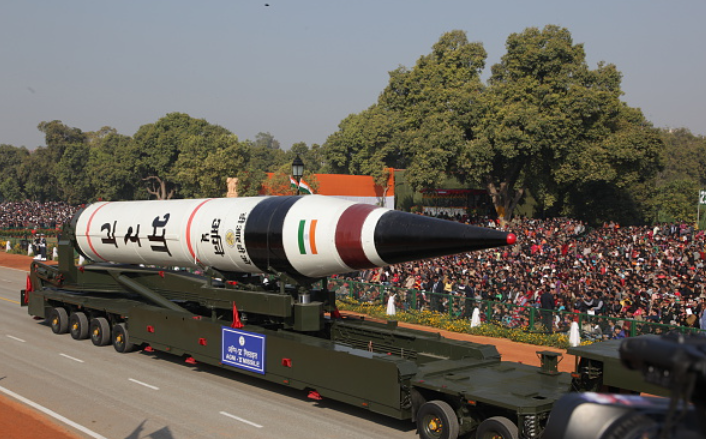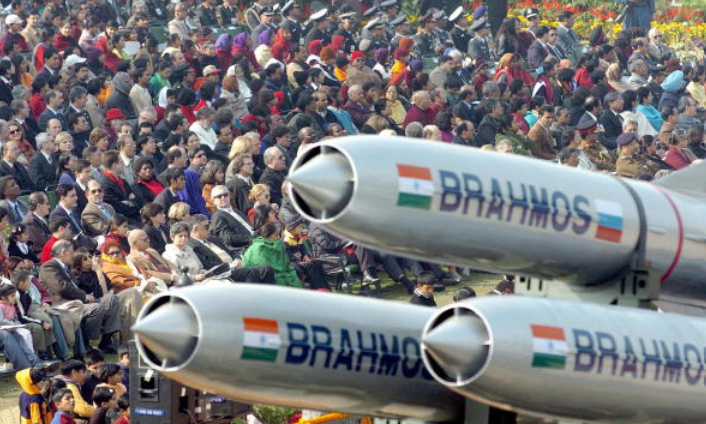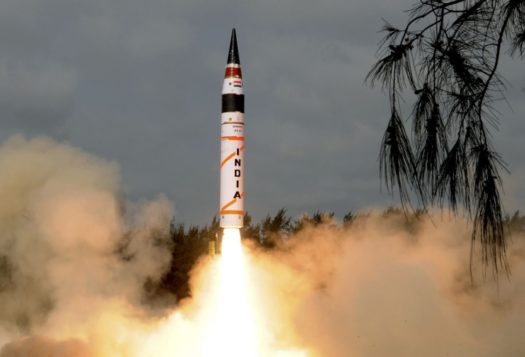
In its 2014 poll manifesto, the Bharatiya Janata Party (BJP) promised to ‘revise and update’ India’s nuclear doctrine. The revision was intended to ‘make it relevant to challenges of current times’ and to ensure credible deterrence in ‘changing geostatic realities.’ Prime Minister Modi constituted a Defense Planning Committee (DPC) to draft the National Security Strategy and Strategic Defense Review a year before the next election to fulfill this promise. Then, in 2019, Indian Defense Minister Rajnath Singh underlined during a visit to Pokhran that India’s ‘no first use’ nuclear commitment depended on circumstances without pointing out the eventualities.
While India’s nuclear doctrines have not been updated over the last nine years of a Modi-led BJP government, India has deviated from its nuclear doctrines. In a rapidly changing geopolitical and technological environment, India’s nuclear doctrines appear outdated or increasingly useless.
The 25th anniversary of nuclearization would be an appropriate opportunity for India to conduct an agile retrospection of its nuclear doctrines to attain more deterring value. With increasing Chinese nuclear capabilities and offensive posturing, Pakistan’s over-reliance on nuclear weapons amidst weak nuclear security culture, and the emerging cyber-nuclear interface and Artificial Intelligence (AI)-nuclear data challenge, Southern Asia is becoming a nuclear hotspot. Thus, without envisioning a new nuclear doctrine, these trends would have severe consequences not only for India’s security predicaments but also for the global order. The new nuclear doctrine should be strategically astute, operationally effective, and politically relevant.
Old Doctrines, New Challenges
India’s nuclear doctrine is based on then Prime Minister Atal Bihari Vajpayee’s statement in parliament and a draft doctrine of the National Security Advisory Board (NSAB). It was announced as a resolution of the Cabinet Committee on Security in January 2003 with eight major pillars ranging from nuclear deterrence to disarmament. Since then, this nuclear doctrine has expressed India’s nuclear responsibilities and illustrates openness and transparency over triumphalism and animosity. However, in the present context, some of these doctrinal objectives and pillars are either under distress or disarrayed.
In a rapidly changing geopolitical and technological environment, India’s nuclear doctrines appear outdated or increasingly useless.
The breakdown in India’s nuclear doctrine is explained by three factors – deteriorating deterrence against China and Pakistan (doctrinal pillar I, II, and III); limited operational principles and scope of nuclear use (doctrinal pillars IV, V, and VI); and mismatch between doctrinal commitments and policy actions for controlling missile technologies and attaining the goal of a nuclear weapon free world (pillar VII and VII).
First, India’s existing doctrinal principles of ‘credible minimum deterrence (CMD),’ ‘No First Use (NFU),’ and massive retaliation are inadequate to deter its adversaries – China and Pakistan. China’s quest for enlarging its nuclear arsenals and delivery systems nullifies India’s commitment to maintain the CMD. Simultaneously, asymmetric conventional military capabilities limit India’s conventional responses to deter China’s ‘salami slicing.’ The persisting Chinese provocations to alter the status quo in the Line of Actual Control (LAC) put a question mark on the original intentions and relevance of the NFU. The minimalism and the NFU criteria were envisioned to deter Chinese provocations. Subsequently, invoking nuclear threats against China has become taboo in Indian strategic thinking. This thinking has evolved from existing doctrines and encumbers the full potentiality of nuclear weapons to deter China. On the contrary, the Chinese have tactfully signaled a nuclear threat against India to influence the ongoing military-to-military dialogue. China also flagged the future deployment of nuclear weapons in the region.
Likewise, Pakistan’s former Director General of the Strategic Plans Division has initiated a conversation to expand the scope of its full-spectrum nuclear deterrence doctrine against India. General Kidwai claims Pakistan has ‘counter-massive retaliation’ capability from 0 miles to 1708 miles. This indicates that Pakistan will maximize the use of its nuclear weapons to attain security goals against India’s conventional military superiority. Thus, a retrospection of the principles of the CMD, NFU, and massive retaliation is necessary against coercive Chinese signaling and Pakistan’s nuclear-centric security strategy.
Second, India’s joint military doctrine claims that the Strategic Force Command (SFC) ‘controls all of India’s nuclear warheads and delivery systems.’ On the contrary, the nuclear doctrine provides an impression of de-mated nuclear warheads and delivery systems. Furthermore, despite having nuclear triad capability, India’s nuclear command and control structures raise questions about their proper operationalization per new organizational practices and communication systems. Moreover, looming threats of cyber and Artificial Intelligence (AI) attacks on India’s nuclear installations require serious doctrinal revision to chart out eventualities. For instance, India opted to exercise the nuclear option to deter biological and chemical weapons attacks against India. However, doctrines are silent on nuclear-cyber interface/attack, even though these threats are more evident and have severe consequences on nuclear deterrence and security.

Third, India’s ‘new vision for explosive growth’ in defense export includes exporting missile systems and technologies such as BrahMos to various East Asian and Middle Eastern countries. Prima facie, it contradicts India’s nuclear doctrinal commitment – ‘a continuance of strict controls on the export of nuclear and missile-related materials and technologies.’ Moreover, it limits the expansion of India’s intended policy goals for enhancing defense export, essential for the indigenous defense ecosystem to flourish. On the disarmament front, India’s stand against the Treaty on the Prohibition of Nuclear Weapons (TPNW) and its pessimism to revitalize the nuclear disarmament movement is paradoxical to doctrinal commitments. These shortcomings and challenges indicate ‘the doctrine-strategy-planning disconnect.’
A New Nuclear Doctrine
Experts are of the firm opinion that India has deviated from its declared nuclear doctrine. However, the government has neither acknowledged deviation nor clarified its actual doctrines. Deviations without declaration are detrimental to deterrence and intensify nuclear risk. A new nuclear doctrine encompassing contemporary nuclear risks would signal New India’s resolves, responsibilities, and specified redlines. This can pause an arms race by limiting misinterpretations and misperceptions. It can motivate nuclear countries in the region to make the best utility of nuclear weapons, enhance nuclear security culture, and improve risk reduction measures. It can also trigger a nuclear conversation between hostile nuclear states.
A new doctrine should bring novelty in policy objectives, strategy, and methods to inflict credible nuclear threats and flexible retaliatory responses, rather than using the early Cold War lexicon of massive retaliation. This cannot be visualized until India brings out a National Security Policy and specifies the role of nuclear weapons in it. Unfortunately, India has yet to release the National Security Doctrine (NSD) due to a lack of expertise in the political class and hesitation around liabilities. Five years after its creation, the DPC must introspect on why it has not been able to deliver an NSD and a corollary nuclear doctrine and recognize that further procrastination will lead to worse outcomes.
A new doctrine should bring novelty in policy objectives, strategy, and methods to inflict credible nuclear threats and flexible retaliatory responses, rather than using the early Cold War lexicon of massive retaliation.
A prospective nuclear doctrine must specify India’s major nuclear threats and design responses accordingly. For instance, against Chinese nuclear saber rattling, India’s nuclear doctrine can curate a conventional-nuclear integration doctrine. For Pakistan, an Indian nuclear doctrine should deter nuclear threat calls by figuring out rhetorical versus actual threat potentials. Furthermore, outlining an estimated response to nuclear terrorism and deterring cross-border terrorism through tech-savvy measures would be helpful in this regard. Classification of crucial weapon systems, acquiring requisite technologies, and reorganizing deployment principles can be parameters to design differentiated doctrinal criteria.
In addition to this, incorporating advanced cyberspace principles to govern nuclear weapon systems; visualizing engagement between nuclear and other domain experts/institutions; envisioning new norms in AI-empowered systems; rationalizing missile export policies; and scrutinizing the nuclear doctrines through the nuclear responsibility framework are some substantive ideas that can give a new lease of life to the nuclear doctrine. This way, retrospection would reorient existing doctrines to make deterrence credible against differentiated threats and to encounter new challenges facing Southern Asia today.
Also Read: Is It Time for India to Rethink its Nuclear Strategy?
***
Click here to read this article in Urdu.
Image 1: Pallava Bagla/Corbis via Getty Images
Image 2: Emmanuel Dunand/AFP via Getty Images


